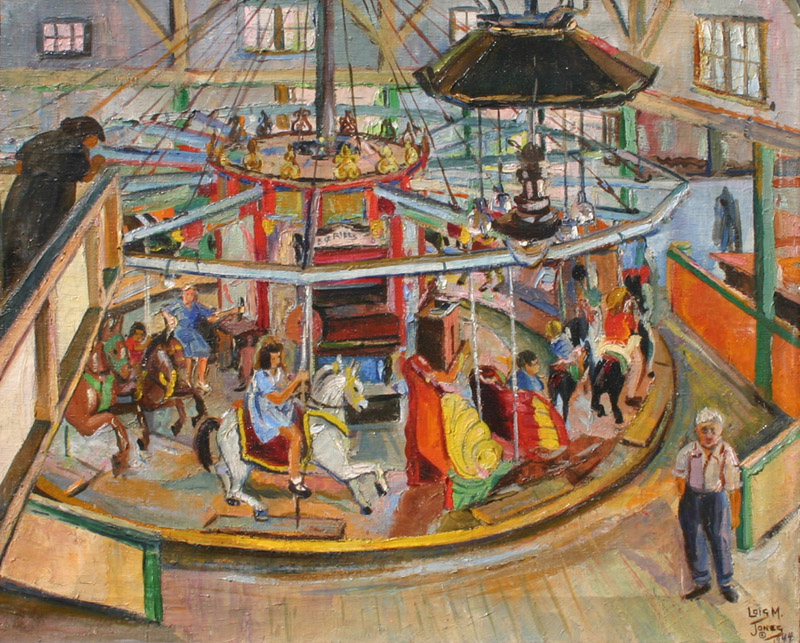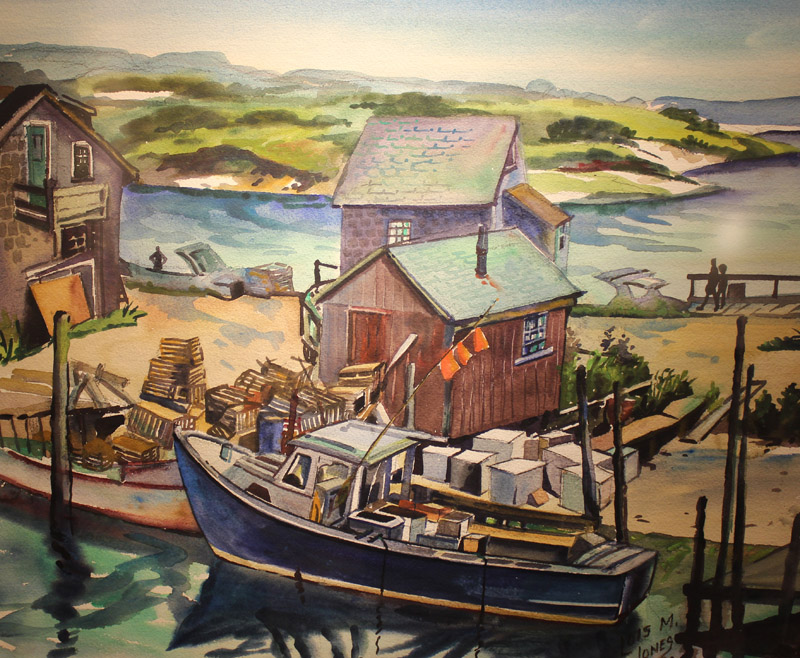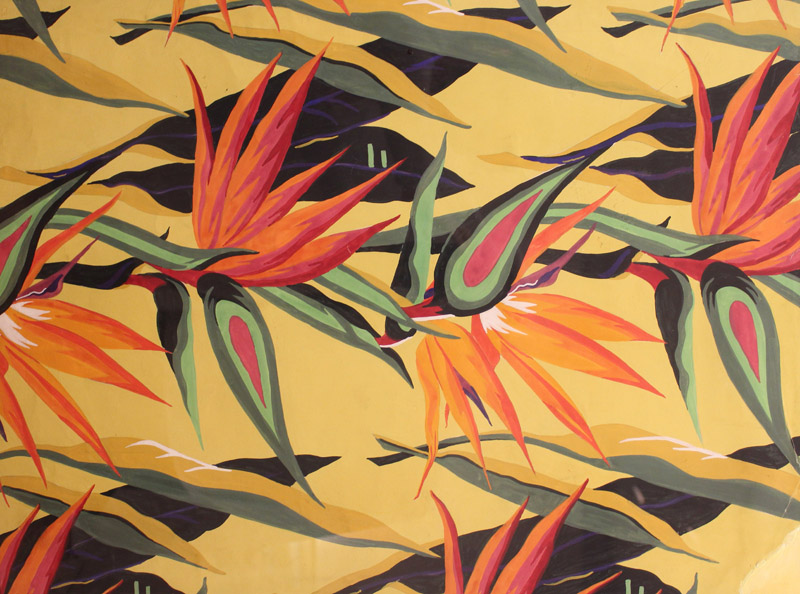When Lois Mailou Jones began painting in the 1920s, she did so in near anonymity, a sign of the endemic racism and sexism of the time. But 92 years after her first exhibition, Ms. Jones is now the focus of a new exhibit at the Martha’s Vineyard Museum, running from June 12 to August 23 this summer. Nearly 17 years after she died, Ms. Jones is once again on display in the Vineyard.
The Island has long been associated with Ms. Jones, who grew up in Boston but spent summers coming to the Vineyard with her family. Her grandmother bought property in Edgartown and lived there year-around, working for the Hatch family, while her mother, a beautician, worked at a local salon during the summer.
Ms. Jones started painting as a child, and her mother often displayed the watercolors and sketches on a clothesline outside their home. When Ms. Jones was 17, her work was the focus of a small exhibition put on by the wife of a Vineyard school principal. Not long after, she began studying at a range of different institutions, most notably the School of the Museum of Fine Art in Boston.
Initially, Ms. Jones was able to achieve some renown within a small circle that included many African American artists, some of whom came to the Vineyard to work with her. But already she understood the limitations society would place on an artist of her gender and race in the early 20th century, and she decided to leave the United States on a fellowship from Howard University to go to Paris.
“She was encouraged by people who she met on the Island to go abroad because she would have more freedom as a black artist to exhibit and be accepted as everyone else would be,” said Martha’s Vineyard Museum curator Anna Carringer. Her time in Paris was a productive one in which she painted works such as Parisian Beggar Woman with poet Langston Hughes supplying the text. But ultimately Ms. Jones returned to the states, and in turn to the Vineyard.
“She loved the Vineyard and loved its influence,” said Linsey Lee, the Martha’s Vineyard Museum’s oral history curator. “She thought of the Vineyard as the place that gave her a kick start.”
Menemsha inspired several works by Ms. Jones throughout her career. “As a matter of fact, it started in Menemsha,” Ms. Jones told Ms. Lee in an interview that Ms. Lee conducted. But Ms. Jones did not focus solely on Menemsha and the exhibit includes work from all over the Island, including her paintings Indian Shops on Gay Head and Edgartown Beach.
For a time, Ms. Jones did not divulge her race in order to be accepted at museums, but eventually, as she gained more acclaim, she revealed who she was and in the process helped break down barriers that had held back other African American artists.
“So many young artists were looking at her as trailblazer,” said Ms. Carringer. “[She] didn’t give up, she knew what she wanted from early on.”
Ms. Jones became known for encouraging and assisting individual artists, earning a reputation as someone at the center of the African American art world. She also taught at Howard University from 1930 until her retirement.
“Listening to her be interviewed and talking about different names of people and it’s almost like she’s name dropping,” said Ms. Lee. “But she’s actually just talking about people who had an influence on her work and who she helped.” Later in life, Ms. Jones began traveling to Haiti with her husband, Haitian artist Louis Vergniaud Pierre-Noel. These trips not only iinfluenced her work, they “changed her whole palette,” said Ms. Lee.
The new colors and vibrancy that she saw in Haiti contrasted with the more mellow hues and settings she had been painting in the Vineyard. As she continued to travel in Haiti and Africa throughout the latter 20th century, her work would continue to grow in depth and in color, while always returning to the Vineyard as both a personal and artistic home.
The Martha’s Vineyard Museum has collected pieces from across Ms. Jones’ career and the country at large for the exhibit, looking to display a broad range of Ms. Jones’ work.
“It’s a really wonderful way to bring all these parts of her life together,” said Ms. Carringer.
The exhibit will also feature audio recordings from an interview done by Ms. Lee with Ms. Jones just before her death at 92 in 1998.
“To have people come into this exhibit and hear her voice talking to them while they’re looking at her work is really special,” said Ms. Carringer. “We think it will add a lot to the exhibit.”
The museum is hoping that this exhibit will give visitors a good sense of Ms. Jones’ life and work. It will open as part of the museum’s summer opening party on June 12 and run until August 23. In her interview with Ms. Lee, Ms. Jones told her, “There is a certain warmth [in Martha’s Vineyard] that I didn’t feel in those early days in Boston and New York.”
“She was a remarkable woman,” said Ms. Lee. “I think it’ll be very special for the Island.”









Comments
Comment policy »